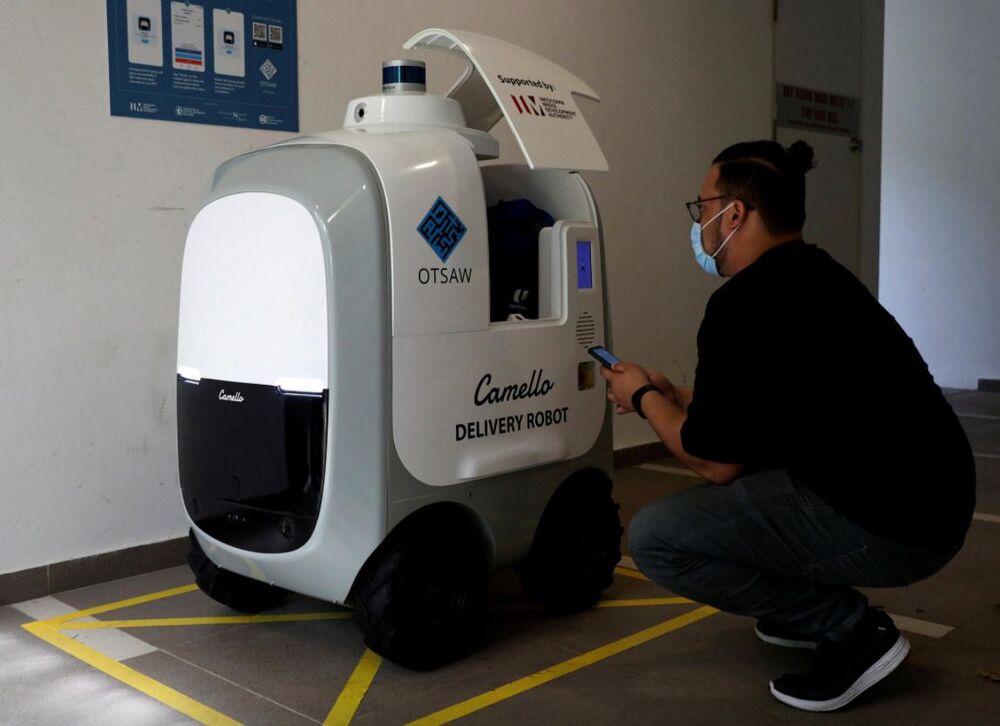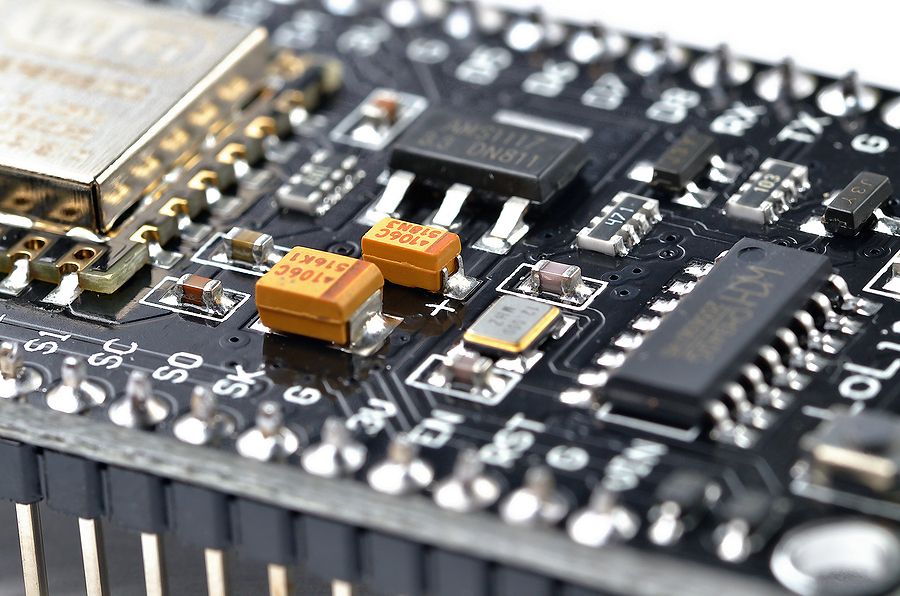Pack your bathing costume — our solar neighborhood is much wetter than you think.



NASA Goddard
The most striking aspect of the approach—for our money, anyway—is the way Bennu feels like a small world; rather than just a 1600-foot-wide hunk of rock. There’s plenty of space on Bennu’s surface to jump around. And one could even leap off the surface, enter into orbit around the asteroid, and then touch back down. The space probe, in fact, captured rocks doing just that.

Got milk?
Hoping to capitalise on a surge in demand for home deliveries, a Singapore technology company has deployed a pair of robots to bring residents their groceries in one part of the city state.
Developed by OTSAW Digital and both named “Camello”, the robots’ services have been offered to 700 households in a one-year trial.
Users can book delivery slots for their milk and eggs, and an app notifies them when the robot is about to reach a pick-up point — usually the lobby of an apartment building.


It’s bad out there for customers of electronic parts and components. The semiconductor shortage is so severe it’s being covered by mainstream media; meanwhile, various politicians have tasked their aides with looking at the global supply chain. Indeed, in the short term, the dearth of chips is already leading to product delays, companies redesigning their parts, and higher device prices. But over the long term, it could usher in a complete rethink of the way electronics parts are designed.
Peggy Carrieres, VP of global sales development and supplier enablement at Avnet, told me she expects the shortage to contribute to engineers reducing the number of physical components used and turning instead to software to handle functions that had historically been done in hardware. The shortages tied to the pandemic are an accelerator for this shift, but it has been happening for years as the industry adjusts to the end of Moore’s Law and the ability to eke out more performance at lower costs.
I had reached out to Avnet because I was interested in what it was seeing from its customers as the chip shortage dragged on. Avnet is a distributor, so it acts as a middleman between electronics components suppliers and the end customers of those parts. Someone building a new electronic device could work with Avnet to source the parts from an existing design, for example, or to build a design out of available parts that fit within a specific price.

A lava flow from Hawaii’s Kilauea Volcano enters the ocean near Isaac Hale Beach Park on August 5, 2018. The volcano’s 2018 eruption was its largest in over 200 years. Credit: USGS
Scientists have figured out what triggers large-scale volcanic eruptions and what conditions likely lead to them.
Hawaii’s Kilauea is one of the most active volcanoes in the world. Because of this and its relative ease of accessibility, it is also among the most heavily outfitted with monitoring equipment – instruments that measure and record everything from earthquakes and ground movement to lava volume and advancement.

Scientists dramatically enhance the achievable resolution at free-electron lasers with a new technique.
Hard X-ray free-electron lasers (XFELs) have delivered intense, ultrashort X-ray pulses for over a decade. One of the most promising applications of XFELs is in biology, where researchers can capture images down to the atomic scale even before the radiation damage destroys the sample. In physics and chemistry, these X-rays can also shed light on the fastest processes occurring in nature with a shutter speed lasting only one femtosecond – equivalent to a millionth of a billionth of a second.
However, on these minuscule timescales, it is extremely difficult to synchronize the X-ray pulse that sparks a reaction in the sample on the one hand and the laser pulse which ‘observes’ it on the other. This problem is called timing jitter, and it is a major hurdle in ongoing efforts to perform time-resolved experiments at XFELs with ever-shorter resolution.

“Gene editing offers unique opportunities to make food production more sustainable and to further improve the quality, but also the safety, of food. With the help of these new molecular tools, more robust plants can be developed that deliver high yields for high-quality nutrition, even with less fertiliser,” says co-author Stephan Clemens, Professor of Plant Physiology at the University of Bayreuth and founding Dean of the new Faculty of Life Sciences: Food, Nutrition & Health on the Kulmbach campus.
For more sustainability on a global level, EU legislation should be changed to allow the use of gene editing in organic farming. This is what an international research team involving the Universities of Bayreuth and Göttingen demands in a paper published in the journal “Trends in Plant Science”.
In May 2020, the EU Commission presented its “Farm-to-Fork” strategy, which is part of the “European Green Deal”. The aim is to make European agriculture and its food system more sustainable. In particular, the proportion of organic farming in the EU’s total agricultural land is to be increased to 25 percent by 2030. However, if current EU legislation remains in place, this increase will by no means guarantee more sustainability, as the current study by scientists from Bayreuth, Göttingen, Düsseldorf, Heidelberg, Wageningen, Alnarp, and Berkeley shows.

Large swaths of U.S. military land are covered with munitions components, including the explosive chemical RDX. This molecule is toxic to people and can cause cancer. It also doesn’t naturally break down and can contaminate groundwater. Now researchers have genetically engineered a grass commonly used to fight soil erosion so that it can remove RDX from the soil, according to a new paper published May 3 in Nature Biotechnology.
A team, which includes researchers from the University of Washington, demonstrated that over the course of three years, a genetically engineered switchgrass could break down an explosive chemical in…